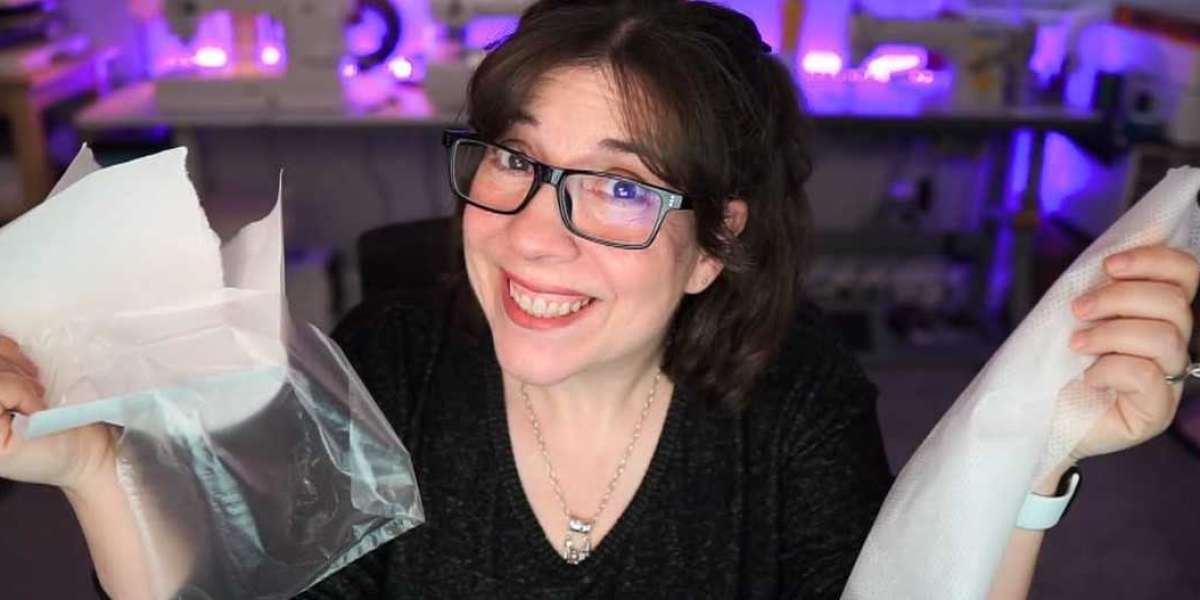Let's talk about the unsung hero of embroidery - the stabilizer. You know that frustrating moment when you've chosen the perfect design, threaded your machine with gorgeous colors, and then... disaster strikes. Puckered fabric. Distorted shapes. Threads that sink into oblivion. Nine times out of ten, the culprit isn't your machine or your skills - it's that flimsy (or missing) layer of stabilizer you thought you could skip.
Stabilizer is to embroidery what foundations are to buildings - invisible but absolutely essential. Get it wrong, and your entire project comes crashing down. Get it right, and you'll wonder how you ever embroidered without it. The difference between amateur and professional-looking embroidery often comes down to this single choice. In this article, we will explore a detailed guide to embroidery stabilizers.
Why Your Embroidery Needs a Crutch
Think of stabilizer as your fabric's personal trainer - it provides the support and structure needed to handle the intense workout of hundreds of needle punches. Different fabrics need different types of support:
- Stretchy knits need the equivalent of a full-body cast (cutaway stabilizer)
- Delicate silks require gentle but firm guidance (water-soluble films)
- Thick denim benefits from a sturdy backup dancer (heavy tearaway)
The biggest myth? That stabilizer is optional if your fabric seems "sturdy enough." I've seen even the heaviest canvas turn into a wavy mess without proper backing. Those perfect stitches you admire on store-bought embroidered items? They're always - always - stitched through quality stabilizer.
The Stabilizer Family Tree
Walking into a stabilizer aisle can feel overwhelming - rolls and sheets in various weights, colors, and mysterious classifications. Here's the cheat sheet:
Cutaway - The forever friend. It stays with your fabric permanently, ideal for stretchy materials that need lifelong support. Perfect for t-shirts, polos, and anything that will undergo regular washing.
Tearaway - The temporary assistant. Provides support during stitching but removes cleanly afterward. Best for stable woven fabrics like cotton or linen where you don't want any stiffness remaining.
Washaway - The disappearing act. Dissolves in water, leaving only your beautiful stitches behind. Essential for delicate fabrics, freestanding lace, or when you can't have any stabilizer visible.
Adhesive - The sticky solution. Comes with a light glue surface to temporarily bond fabric layers. Lifesaver for tricky materials like towels or fleece that refuse to stay put.
Film-like - The invisible support. Ultra-thin transparent sheets that stabilize without adding bulk. My secret weapon for sheer fabrics where other stabilizers would show through.
Matching Stabilizer to Your Fabric
The golden rule: Your stabilizer should compensate for whatever your fabric lacks.
For the stretchy rebels (knits, jersey, spandex):
You need maximum stability. Use medium-weight cutaway stabilizer, and don't be shy about layering. I often use two layers for extra-stretchy performance fabrics. The cutaway edges will hide neatly under your stitches.
For the delicate divas (silk, chiffon, organza):
Brutal force will destroy these fabrics. Opt for water-soluble stabilizer on top and bottom - it's like giving your delicate fabric a protective bubble wrap during stitching.
For the thick and proud (denim, canvas, leather):
These can handle (and need) heavy-duty support. A firm tearaway provides enough stability without adding unnecessary bulk that could break needles.
For the fuzzy ones (towels, fleece, terry cloth):
The enemy here is stitch disappearance. Use adhesive stabilizer on top (topper) to keep those loops flat and your stitches visible. Combine with cutaway underneath for best results.
The Hidden Mistakes Even Experienced Embroiderers Make
After teaching hundreds of students and troubleshooting countless projects, I've seen the same stabilizer mistakes repeated:
- The One-Size-Fits-All Fallacy - Using the same stabilizer for every project because "it's what I have." Your fabric deserves better.
- The Scrooge Syndrome - Cutting the stabilizer exactly to hoop size to "save material." This is false economy - you need at least an inch extra all around.
- The Direction Disregard - Not paying attention to grain lines. Even stabilizer has a grain, and aligning it properly makes a noticeable difference.
- The Adhesive Overdose - Spraying enough adhesive to fossilize your project. A light mist is all you need - your future self (and needle) will thank you.
- The Removal Rush - Tearing away stabilizer the second the machine stops. Let it cool first to prevent stitch distortion.
Pro Tips They Don't Tell You
Here's the insider knowledge I've gathered from years of trial and (painful) error:
- The Finger Test - After hooping, run your finger between fabric and stabilizer. If you can easily separate them, you didn't use enough adhesive.
- The Shadow Knows - Hold your hooped project up to light before stitching. If you see more shadow in some areas, your stabilizer isn't evenly distributed.
- The Wrinkle Trick - For stubborn wrinkles in cutaway stabilizer, lightly steam them out before stitching. Just don't melt your adhesive.
- The Needle Whisperer - If your machine starts making unhappy noises, your stabilizer might be too thick for the needle size. Listen to your machine.
- The Double Life - Some stabilizers work better when used in combinations. A tearaway base with washable topper can solve tricky fabric challenges.
When to Break the Rules
Like any craft, sometimes the "wrong" technique produces the best results:
- That time I used three layers of lightweight stabilizer instead of one heavy layer for an impossibly delicate handkerchief - it worked beautifully.
- The project where I deliberately used too-small stabilizer but floated the fabric over it - saved a difficult placement situation.
- When I stopped removing all the tearaway stabilizer from behind dense designs - left just enough to prevent stitch collapse.
The real skill comes in knowing when standard practices won't serve your particular project - and having the confidence to experiment.
Your Stabilizer Emergency Kit
Every embroiderer should have these stabilizer types on hand for any situation:
- Medium-weight cutaway - Your workhorse for most apparel
- Light tearaway - For stable woven projects
- Water-soluble film - Delicate fabric savior
- Adhesive-backed tearaway - For tricky-to-hoop items
- Heavy cutaway - For thick fabrics and dense designs
With these five, you can handle about 95% of embroidery situations that come your way.
The Final Word
Stabilizer isn't the glamorous part of embroidery - no one oohs and aahs over your perfect choice of backing. But it's the quiet foundation that lets your stitches shine. The next time you're tempted to skip stabilizer or use whatever's within reach, remember: That extra minute choosing the right support could mean the difference between a project you're proud of and one you hide in the bottom drawer.
Now go forth and stabilize with confidence - your stitches will stand tall and straight, just as they should.





